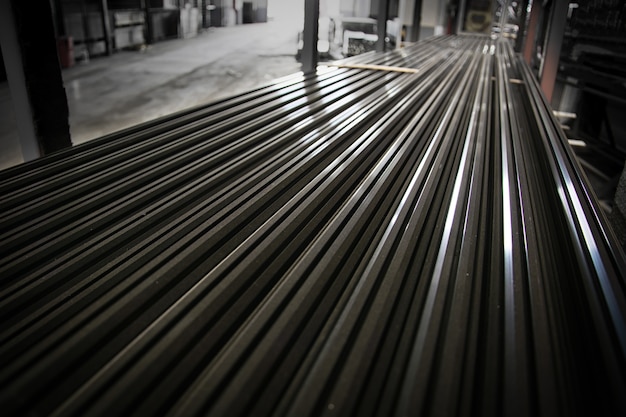Introduction:
In the realm of metalworking, the distinction between Hot Rolled Plates and cold rolled sheets plays a pivotal role in determining the properties and applications of various metallic products. Both processes are integral to shaping raw materials into usable forms, but they diverge significantly in terms of methodology and resulting characteristics. Understanding these disparities is essential for industries ranging from construction to manufacturing, as it informs decisions regarding material selection and processing techniques.

Key Differences Between Hot Rolled Steel Plates and Cold rolled steel sheets:
Hot Rolled Steel Plates and cold rolled steel sheets are distinct in their production methods and the properties they exhibit. Hot rolling involves subjecting metal slabs or ingots to high temperatures, typically above the recrystallization point, and passing them through rollers to achieve the desired thickness and shape. This process results in plates with a scaled surface finish and a tendency towards rounded edges. In contrast, cold rolling occurs at room temperature, where metal sheets are compressed between rollers to reduce thickness and improve surface smoothness. The cold rolling process imparts a finer surface finish and tighter dimensional tolerances compared to hot rolling.
Applications and Uses:
Hot Rolled Steel Plates find widespread applications in industries requiring robust and durable materials, such as construction, shipbuilding, and heavy machinery. Their scaled surface provides enhanced resistance to corrosion and mechanical damage, making them suitable for structural components subjected to high stress and environmental exposure. Cold rolled steel sheets, on the other hand, are favored in applications demanding precise dimensions and a smooth surface finish, such as automotive body panels, appliances, and electronic enclosures. The superior surface quality of cold rolled steel sheets facilitates painting, coating, and other finishing processes, making them ideal for aesthetically sensitive applications.
Mechanical Properties:
The disparity in processing techniques between hot rolling and cold rolling imparts distinct mechanical properties to the resulting products. Hot Rolled Steel Plates typically exhibit higher ductility and toughness due to the recrystallization process, which refines the microstructure and relieves internal stresses. However, they may have reduced tensile strength and yield strength compared to their cold rolled counterparts. Cold rolled steel sheets, characterized by strain hardening during processing, boast superior tensile strength and surface hardness while maintaining adequate ductility for forming operations. These mechanical attributes make cold rolled steel sheets preferable for applications requiring strength and dimensional accuracy.
Surface Finish and Appearance:
One of the most notable disparities between Hot Rolled Steel Plates and cold rolled steel sheets lies in their surface finish and appearance. Hot Rolled Steel Plates feature a characteristic scaled surface caused by the oxidation of the metal during high-temperature processing. While this scale can provide temporary corrosion resistance, it often necessitates additional surface treatment for aesthetic purposes. In contrast, cold rolled steel sheets boast a smooth, uniform surface free from scale and other surface defects. This pristine finish not only enhances visual appeal but also facilitates subsequent coating and finishing processes, reducing the need for extensive surface preparation.
Conclusion:
In summary, the dissimilarities between Hot Rolled Plates and cold rolled sheets encompass not only their production methods but also their properties, applications, and visual characteristics. While Hot Rolled Steel Plates excel in durability and resistance to corrosion, cold rolled steel sheets offer superior dimensional accuracy and surface quality. Understanding these distinctions empowers industries to make informed decisions regarding material selection, ensuring optimal performance and cost-effectiveness in various applications. Whether for structural integrity in construction or aesthetic appeal in consumer goods, the choice between Hot Rolled Steel Plates and cold rolled steel sheets hinges on the specific requirements of each application and the desired balance of properties.
| Website: | https://www.sydneymetaltrading.com |
| Google Business Profile: | |
| Name: | Sydneymetaltrading |
| Phone: | 971 6 5441814 |
| Address: | Industrial Area. 13 - near Tasheel & Immigration Office - Sharjah - United Arab Emirates |
| E-mail ID: | [email protected] |
| Facebook: |


